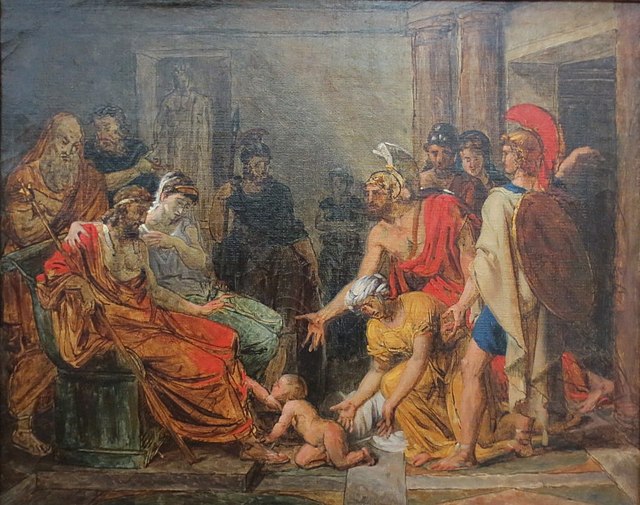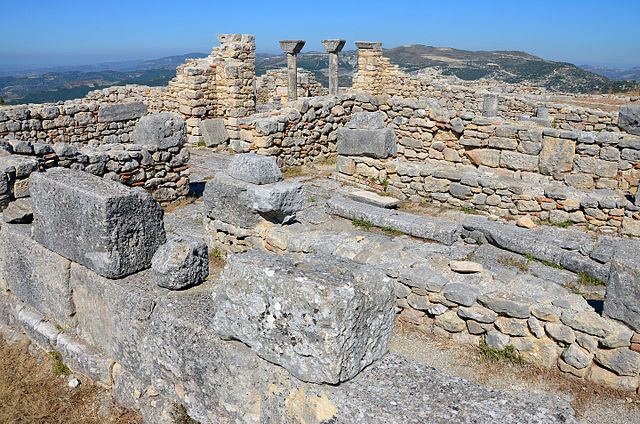Taulantii or Taulantians were an Illyrian people that lived on the Adriatic coast of southern Illyria. They dominated at various times much of the plain between the rivers Drin (Drilon) and Vjosa (Aoös). Their central area was the hinterland of Epidamnos-Dyrrhachion, corresponding to present-day Tirana and the region between the valleys of Mat and Shkumbin (Genusus). The Taulantii are among the oldest attested Illyrian peoples, who established a powerful kingdom in southern Illyria. They are among the peoples who most marked Illyrian history, and thus found their place in the numerous works of historians in classical antiquity.
The Illyrian taulánt- and its Ancient Greek translation chelidón- mean "swallow".
The young Pyrrhus at the court of King Glaukias by Hyacinthe Collin de Vermont, c. 1750.
Silver stater of the Illyrian king Monunius, c. 280 BC from the Dyrrhachion mint.
The Illyrians were a group of Indo-European-speaking people who inhabited the western Balkan Peninsula in ancient times. They constituted one of the three main Paleo-Balkan populations, along with the Thracians and Greeks.
Queen Teuta of the Ardieai orders the Roman ambassadors to be killed – painted by Augustyn Mirys
Illyrian ship dating from the 8th–7th century BC
The chromolithographic Bronze belt plaque of Vače, Slovenia of the Hallstatt culture
Details of the late antique cathedral complex in Byllis, Albania and the Adriatic sea in the distance.







